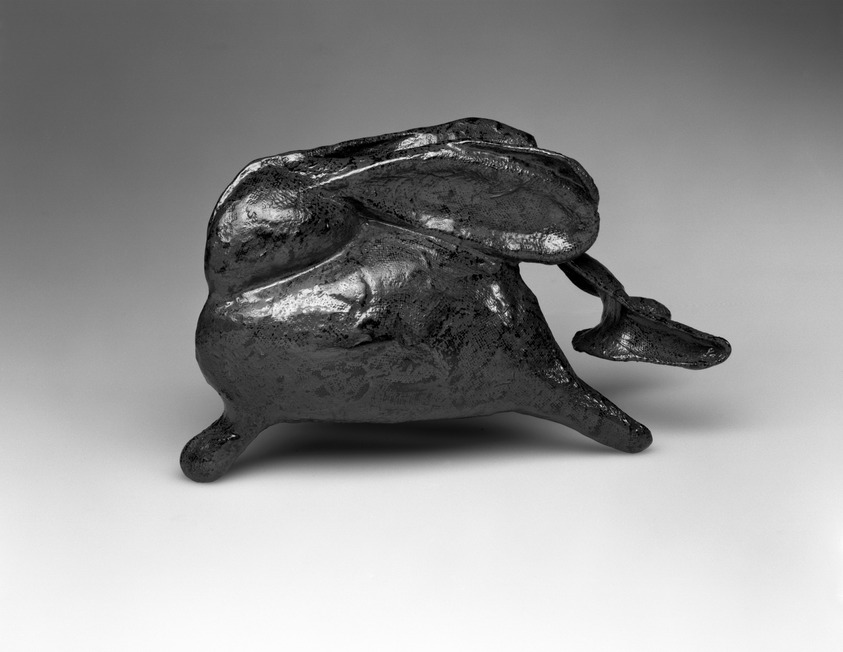
Artist:Kofushiwaki Tsukasa
Medium: Molded hollow-dry lacquer on hemp cloth, with Negoro-style lacquer
Geograhical Locations:
Dates:1998
Dimensions: 5 5/8 x 9 7/8 x 3 5/8 in. (14.3 x 25.0 x 9.2 cm)
Collections:
Accession Number: 1998.82
Image: 1998.82_bw.jpg,
Catalogue Description: An idealized image of a rabbit with its quintessential characteristics -- rabbit-ears, outstretched short legs, and full form -- expressing the rapid movement associated with this animal. The rabbit's fur is suggested by the mottled effect of the rough surface of black-and-red lacquer over hemp cloth. After he made several representational works, struggling to clarify the meaning of his production, he began loosely constructing an initial form. Through the distortion that would occur in the process of finishing the work, he discovered a form previously unknown in his repertory. In his production, after variations in form as a result of distortion, he named this process "formative evolution" as a parallel to a biological term. Since then, he began to consider the finished form of his latest work as the starting point of his next work. He said that the production of his work itself is part of his experience. Exciting discoveries in working with the lacquer process become a matter of fact, and the "evolved form" became a natural evolution for this work. His forms then evolved into the abstract. The rabbit was a subject he has used since 1989. He selected desirable motifs from the viewer's point of view in order to express "the boundary where man meets nature." That is what he felt in a recent trip to Michigan, where he visited a friend. Rural American life, facing nature, and hunting deer, was extraordinary experience for the artist; however, it was everyday life for his friend. He realized an invisible distance between his friend and himself. Feeling the boundary where man meets nature, he came to see the form he wanted to explore. The rabbit is one of the motifs which encompasses such sensations when he faced nature. He also selected a boat and flag as others. Technique: The term "Negoro" designates a broad category of sturdy, functional pieces, originally fashioned in wood and coated with red lacquer over black. "Negoro" is the name of a large temple complex in Wakayama, established in 1288 as head quarters of the Buddhist Shingi Shingon sect. Countless lacquered pieces were made for everyday and ritual use by monks in the sixteenth century. The temple's name has been a generic term applied, often loosely, to undecorated red lacquer objects of practical use. "Negoro" lacquers reflect the satisfying pleasure of fine workmanship and durable, functional designs that evolved through long use, when the red surface would be worn to a mottle color, with traces of the black base coat appear through the red lacquer layer (see Watt and Ford). Kofushiwaki used the technique of red lacquer over black. The body of the object was first molded with plaster, and, after drying, pieces of hemp-cloth soaked in black lacquer were applied on one another. After the body dried, it was taken off the mold, and hemp-coating was then applied over the black lacquer. The body was finally polished in order to show the black base coat beneath the red lacquer and varnished. #09 (artist's sticker on interior) Condition: Intact. Stands without base. Excellent, no cracks.